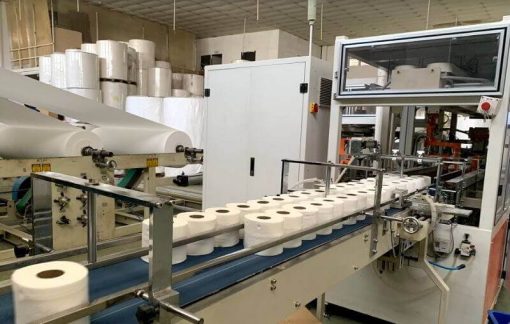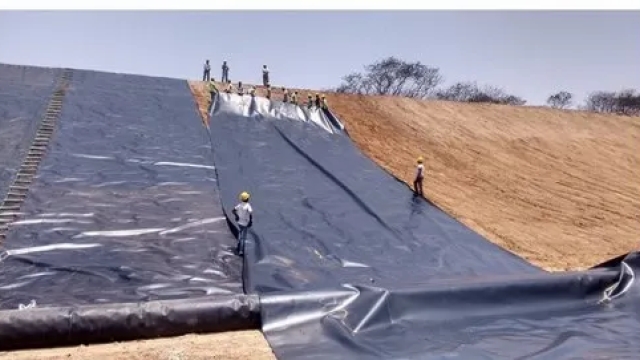Paper is a ubiquitous part of our daily lives, serving as a canvas for our thoughts and a medium through which we communicate. Although often taken for granted, the process of paper manufacturing is a delicate art that combines science, precision, and centuries of knowledge. From the sheets of glossy paper used in magazines to the soft rolls of toilet paper we rely on every day, the journey from pulp to product is a fascinating one. In this comprehensive guide to paper manufacturing, we will delve into the hidden secrets behind this ancient craft, uncovering the techniques and innovations that bring paper to life. Whether you’re curious about the world of paper production or interested in starting your own toilet paper manufacturing venture, this article will provide you with a roadmap to navigate the intricate process and unlock the foundation of our literary world. So, let us embark on this enlightening journey, unraveling the mysteries behind the creation of paper and revealing the skills required to master this age-old art.
History of Paper Manufacturing
The history of paper manufacturing dates back thousands of years. It is believed that the earliest forms of paper were first developed by the ancient Egyptians around 3000 BC. These early papers were made by pounding strips of papyrus reeds together to form a thin, flat sheet. The word "paper" itself comes from the Greek word "papyrus."
However, it was in ancient China where the art of papermaking truly flourished. The Chinese are credited with inventing the process of making paper as we know it today. In the 2nd century BC, they discovered that a fine pulp made from mulberry fibers, along with other plant materials, could be spread out and dried to create a smooth and flexible surface. This marked a significant advancement in paper manufacturing, as it allowed for the production of larger and more durable sheets.
As time went on, the knowledge of papermaking spread across different regions and cultures. In medieval Europe, paper became more accessible as paper mills were established. Initially, paper was made from rags and linen fibers, which were soaked, beaten, and then pressed to remove excess water. The resulting pulp was then dried to create sheets of paper.
Throughout history, paper has played a crucial role in the development of human civilization. From record-keeping to communication, paper has been the medium through which knowledge and ideas have been preserved and transmitted. Over time, innovations have been made to improve the paper manufacturing process, leading to the wide variety of paper types we have today, including the much-needed toilet paper.
In conclusion, the history of paper manufacturing is an ancient and fascinating one. From the early methods of using papyrus in Egypt to the invention of papermaking in China, the evolution of this craft has shaped the way we communicate and record information. Understanding the history of paper manufacturing is key to appreciating the importance and impact of this timeless art form.
The Paper Manufacturing Process
Brown Napkin
In the fascinating world of paper manufacturing, there is a carefully orchestrated process that brings this essential material to life. From the humble beginnings of pulp to the final product, each step is crucial in crafting the perfect sheet of paper.
Pulping: The journey begins with the pulping stage. In this step, various types of raw materials, such as wood, recycled paper, or even agricultural residues, are broken down into fibers. These fibers are then thoroughly beaten and mixed with water to create a fiber slurry.
Forming: Once we have the fiber slurry, it’s time for the forming process. The slurry is poured onto a wire mesh conveyor system, allowing water to drain away while the fibers begin to intertwine. As the water continues to drain, a mat of fibers starts to form, setting the stage for the next crucial steps.

Pressing and Drying: Now that we have a fiber mat, it’s time to press and dry it. The mat passes through rollers that squeeze out excess moisture, leaving behind a more compact sheet. After pressing, the paper enters a series of heated rollers that dry it out further, removing any remaining water content.
By following these steps, paper manufacturers can produce a wide variety of paper products, including the ever-present toilet paper. Now, armed with a basic understanding of the paper manufacturing process, you can truly appreciate the skill and precision involved in creating this ubiquitous material.
Toilet Paper Manufacturing Process
Toilet paper manufacturing involves several steps to transform raw materials into the familiar rolls we use every day. Here is an overview of the process.
Fiber Preparation:
The first step in toilet paper manufacturing is fiber preparation. Wood pulp, recycled paper, or a combination of both are used as the primary raw materials. The fibers are mixed with water and chemicals to break them down into a pulp mixture. This pulp is then refined and cleaned to ensure its quality.Sheet Formation:
Once the pulp is ready, it is directed to the paper machine. The machine consists of a long conveyor belt-like structure where the paper is formed. The pulp mixture is spread evenly on a wire mesh, and excess water is removed as it passes through the mesh. This helps in forming a continuous sheet of paper.Drying and Cutting:
After the paper sheet is formed, it goes through a series of drying processes to remove any remaining moisture. It is pressed and heated to facilitate drying. Once dried, the paper is wound onto large rolls known as parent reels. These parent reels are then sent to cutting machines where they are cut into smaller rolls, ready for packaging and distribution.
By following these steps, toilet paper manufacturers ensure the production of high-quality and hygienic products that meet the demands of consumers worldwide.




